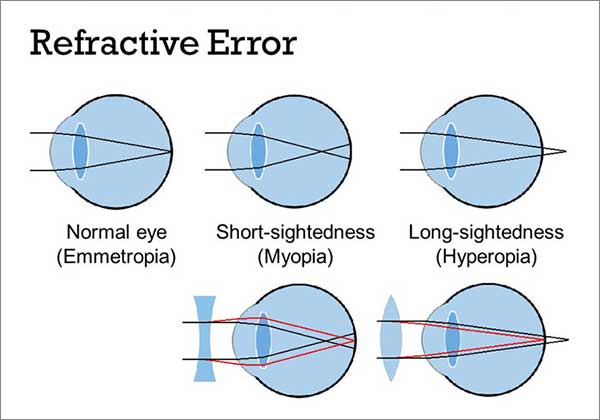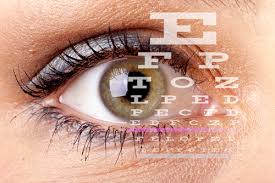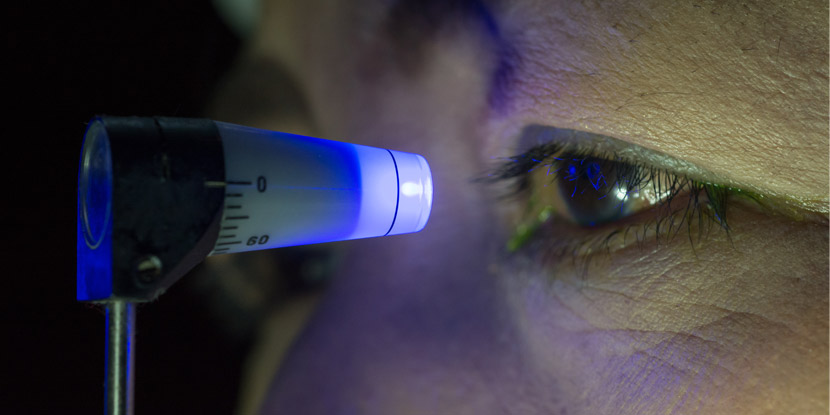Refractive errors in the eye are common vision problems caused by irregularities in the eye’s shape or the curvature of the cornea or lens. These irregularities prevent light from focusing properly on the retina, which leads to blurred or distorted vision. There are several types of refractive errors, including:
- Myopia (Nearsightedness):
- Myopia occurs when the eye is longer than normal or the cornea is too curved. This causes light to focus in front of the retina instead of directly on it. As a result, close-up objects are seen clearly, but distant objects appear blurry.
- Hyperopia (Farsightedness):
- Hyperopia happens when the eye is shorter than normal or the cornea has too little curvature. In hyperopic eyes, light focuses behind the retina, making it easier to see distant objects clearly but causing close-up objects to appear blurry.
- Astigmatism:
- Astigmatism occurs when the cornea or lens has an irregular shape, which leads to multiple focal points. This results in distorted or blurred vision at various distances, both near and far.
- Presbyopia:
- Presbyopia is an age-related refractive error that typically occurs around the age of 40. It happens when the natural lens inside the eye becomes less flexible, making it difficult to focus on close-up objects, such as reading material or smartphone screens.
Refractive errors are very common and can affect people of all ages. They can be corrected using eyeglasses, contact lenses, or refractive surgery (such as LASIK) to improve vision and alleviate the associated symptoms. An eye care professional can diagnose refractive errors through a comprehensive eye examination and prescribe the appropriate corrective measures based on the individual’s visual needs.
Now you can reach our Dr. Sonia Maheshwari , Eye Specialist in Mumbai practicing at Clear Sight Eye care and Laser Center.




